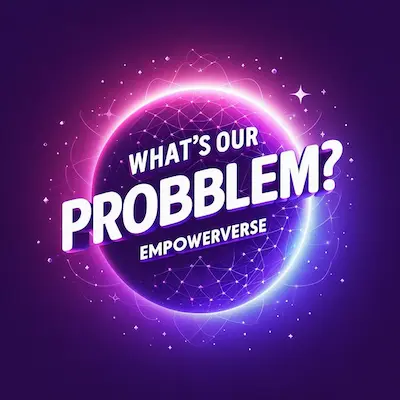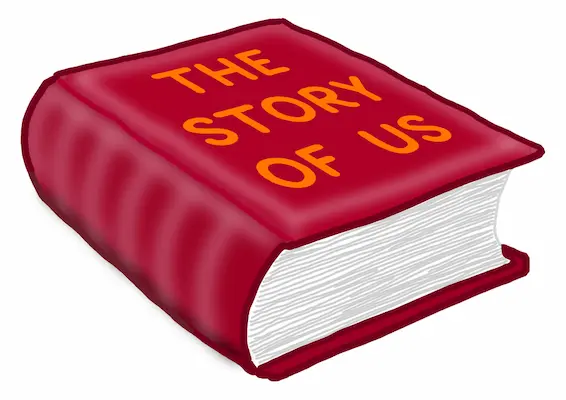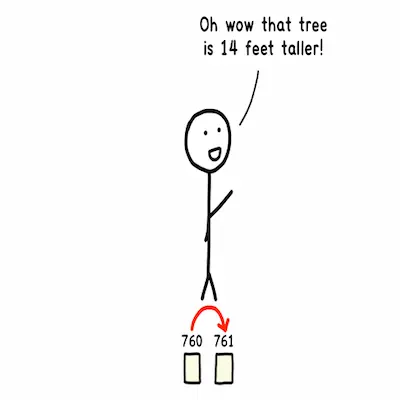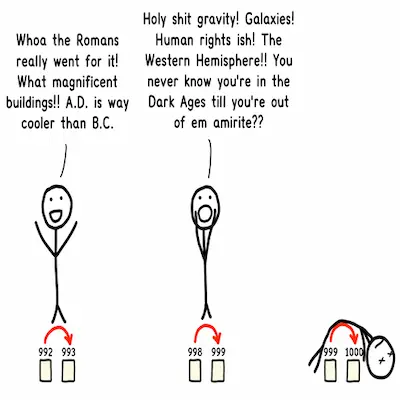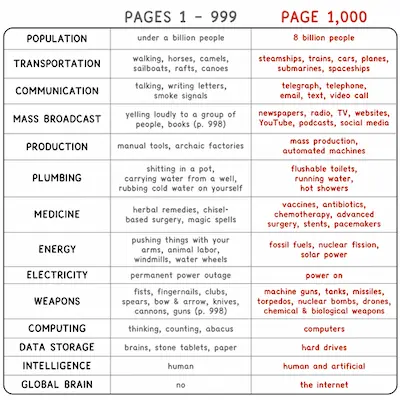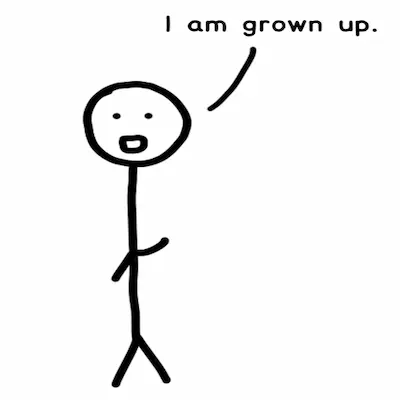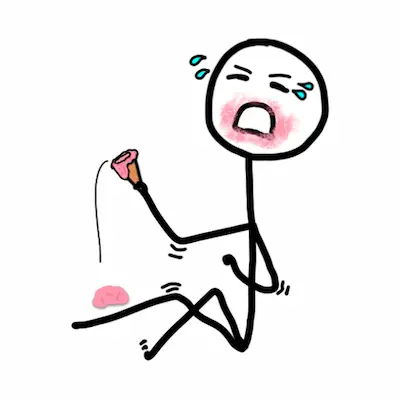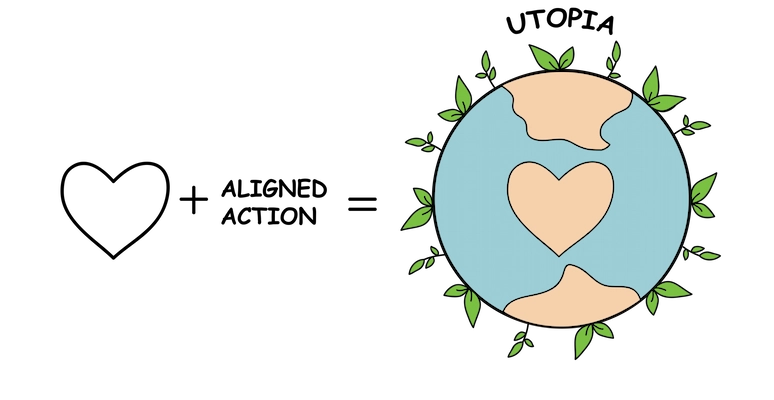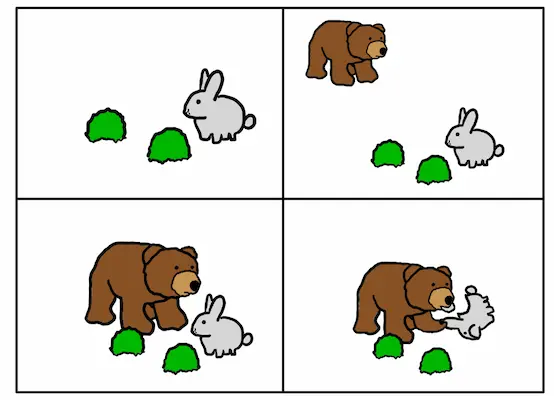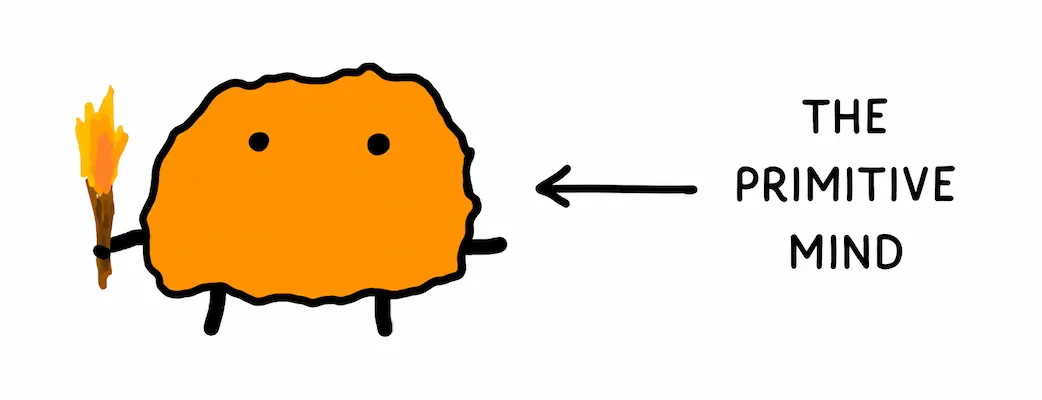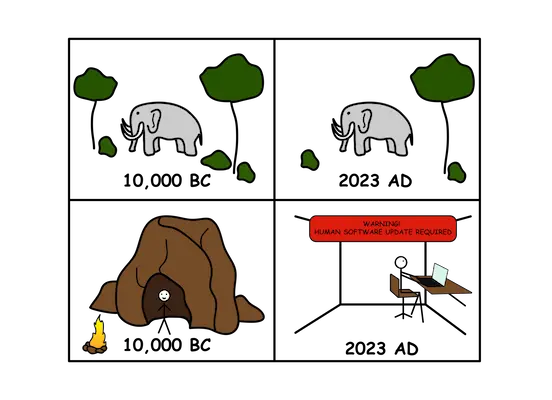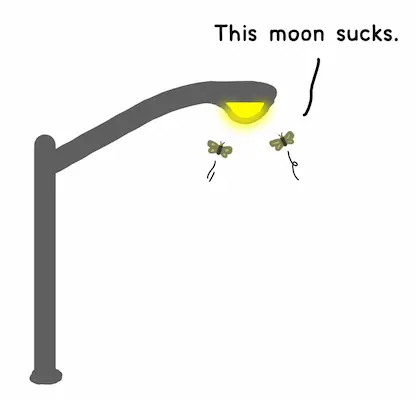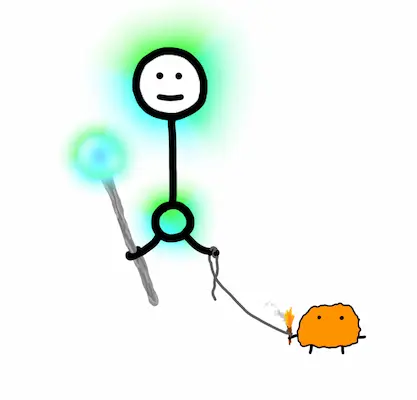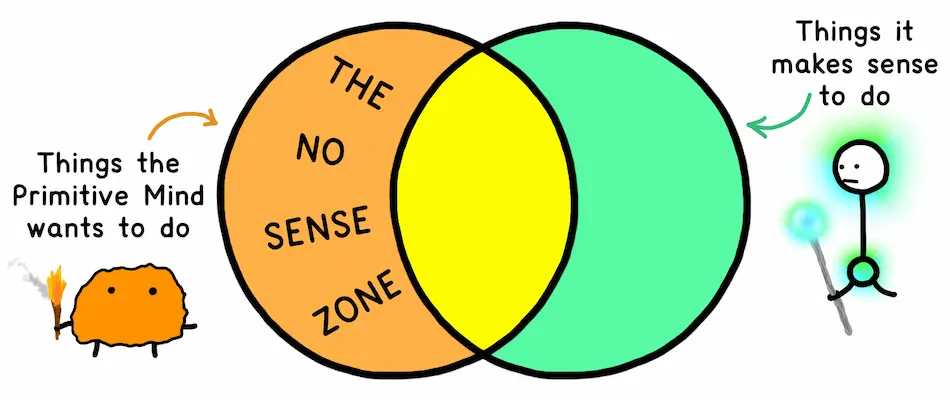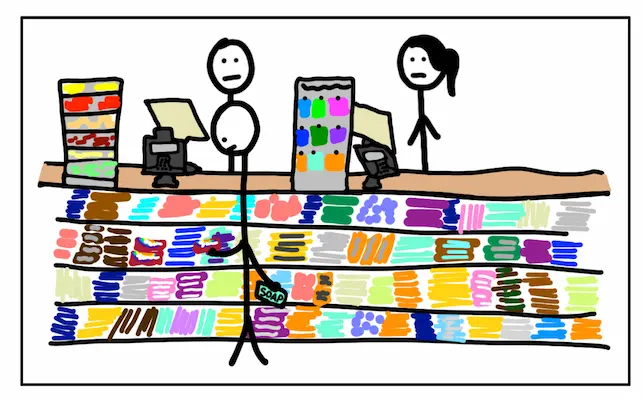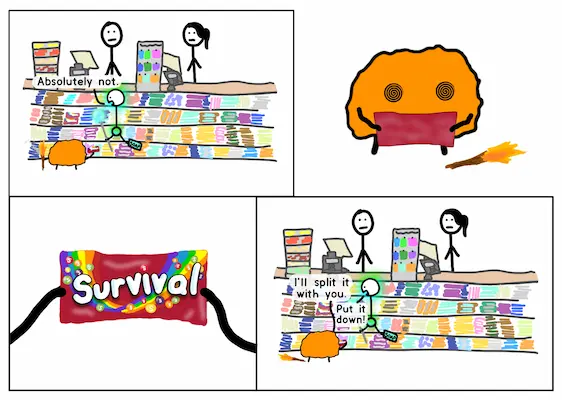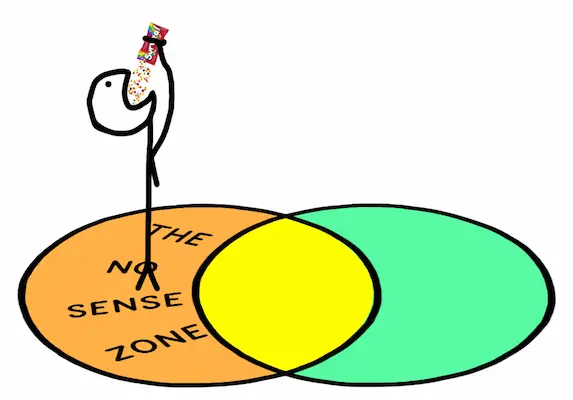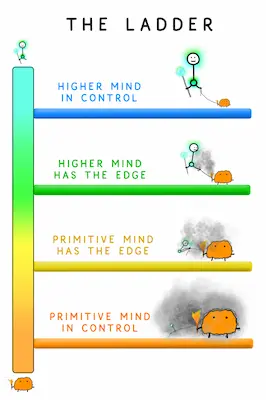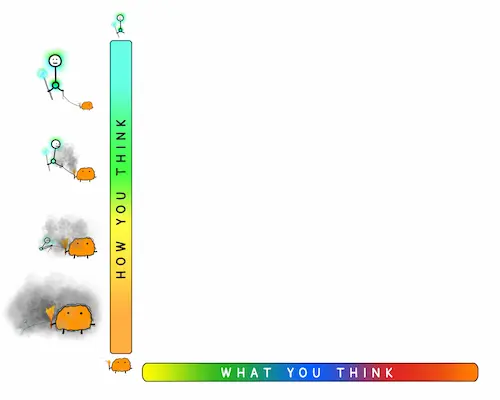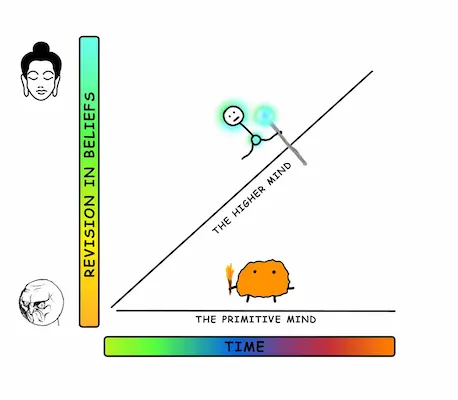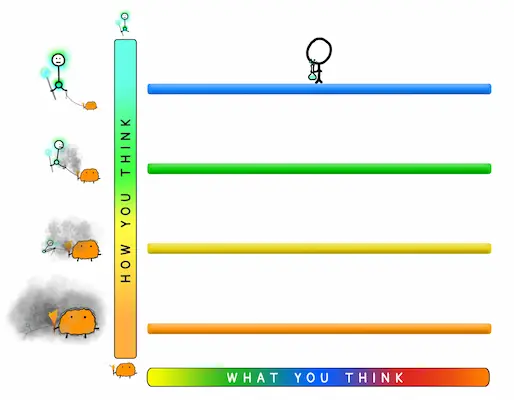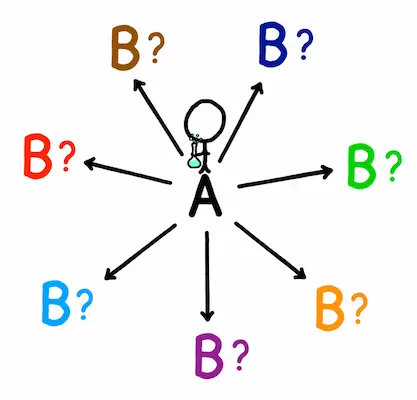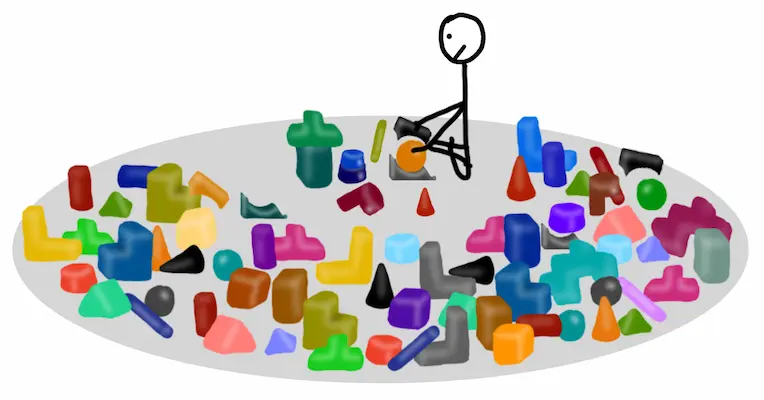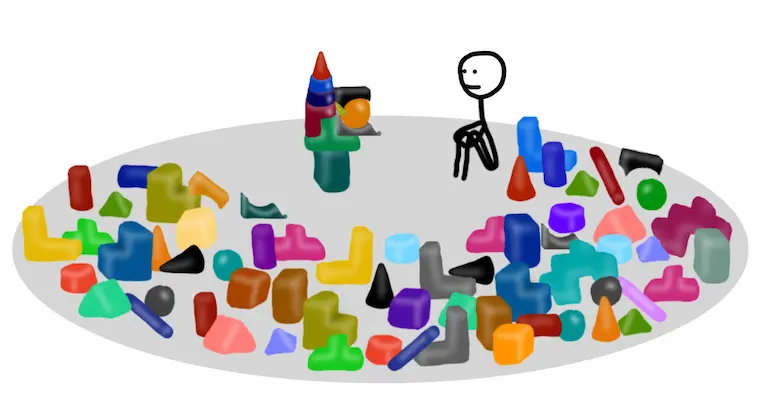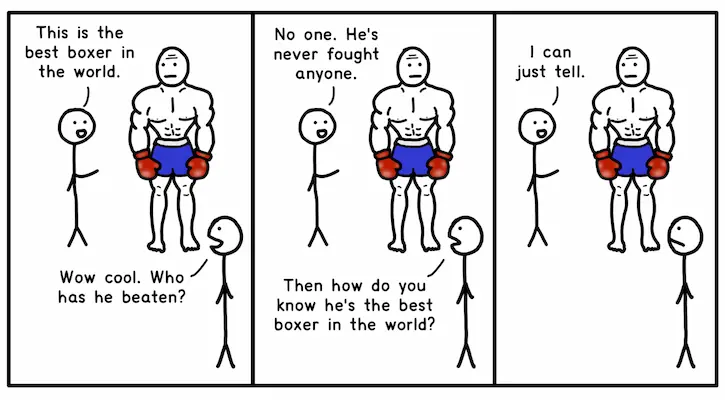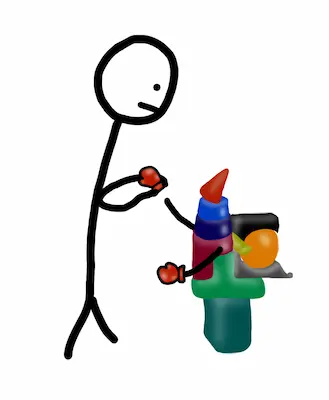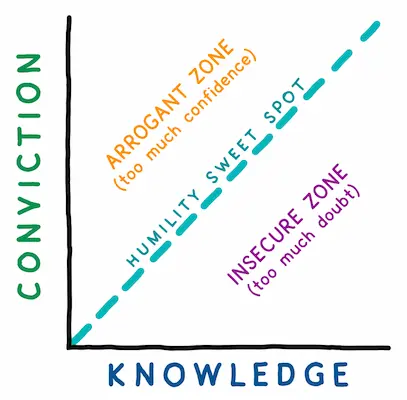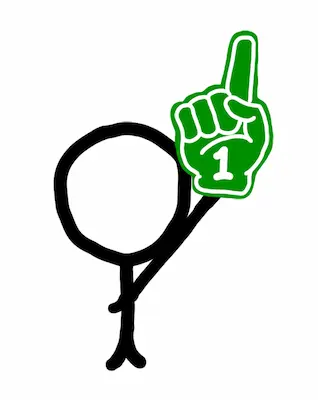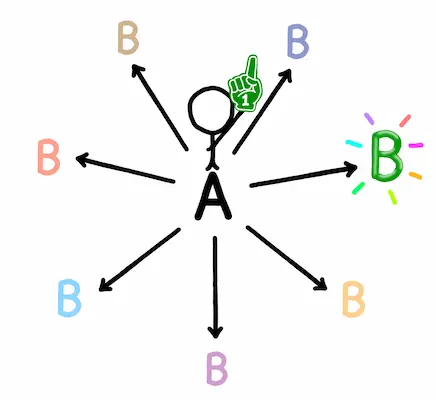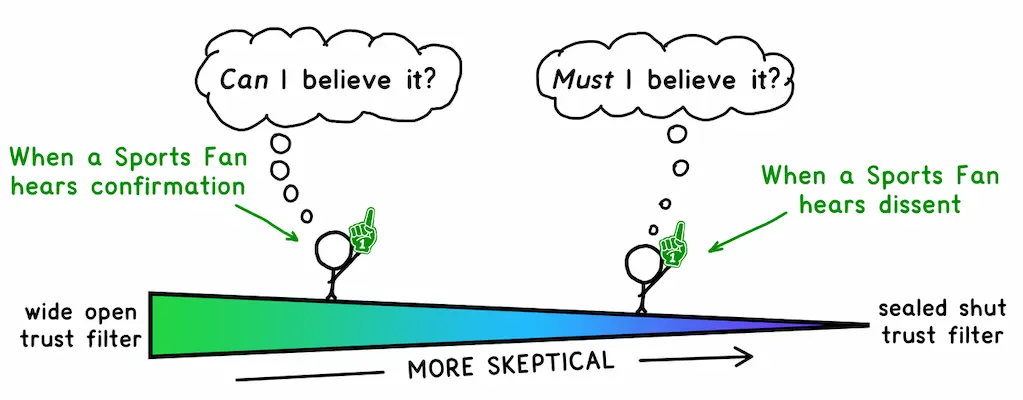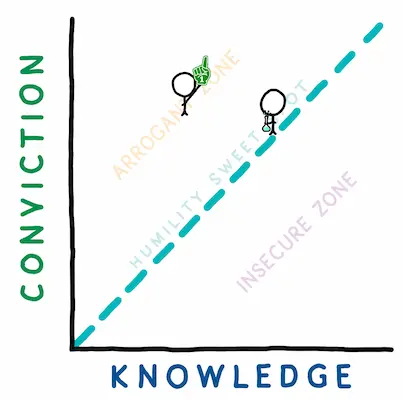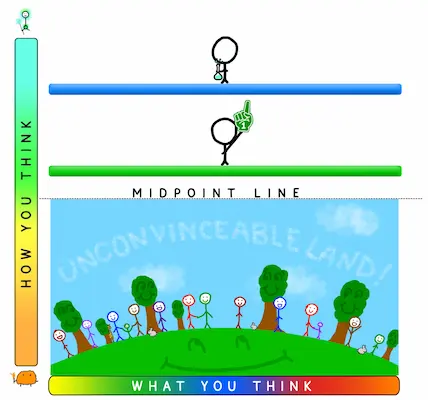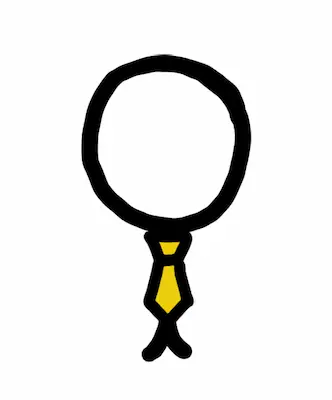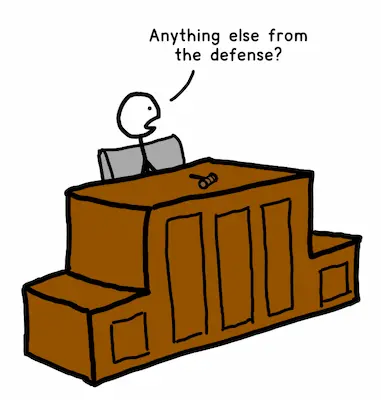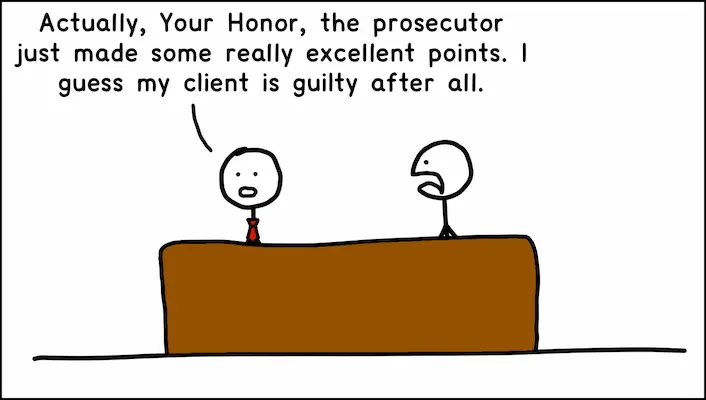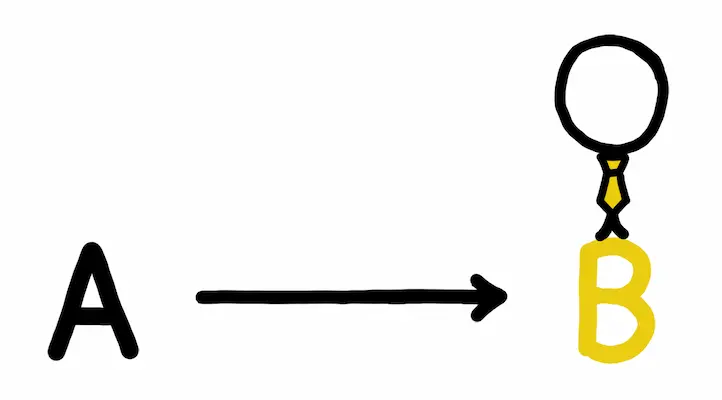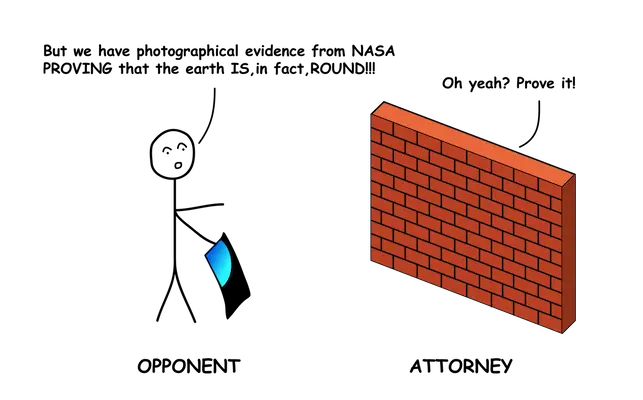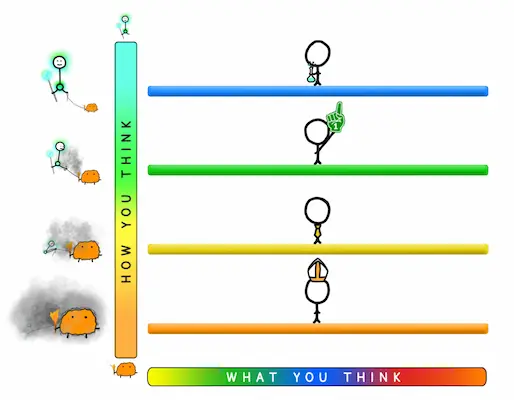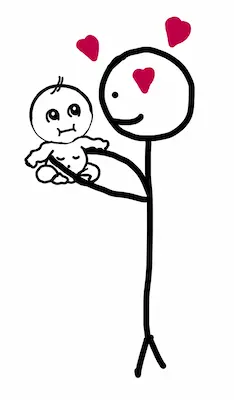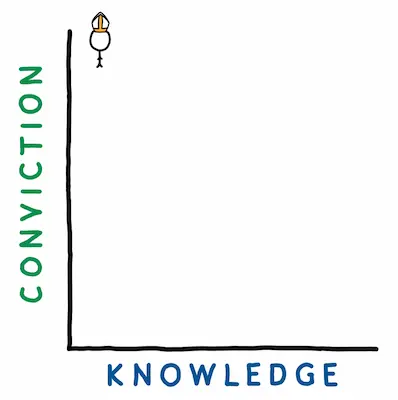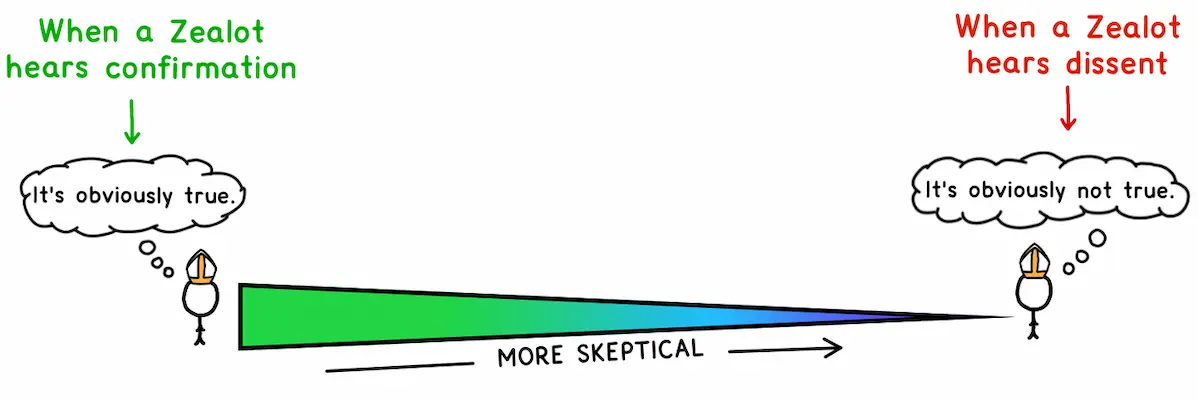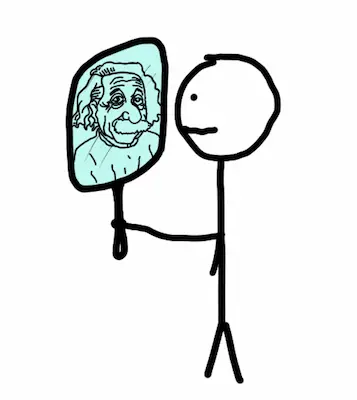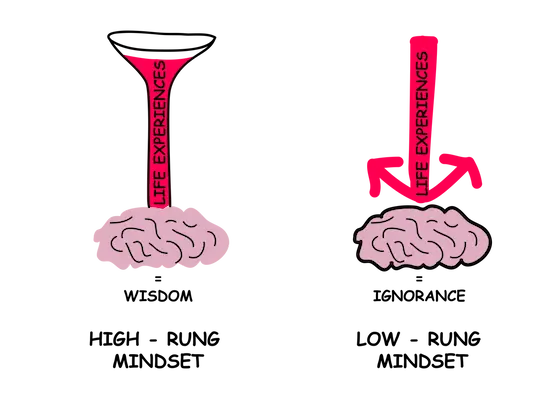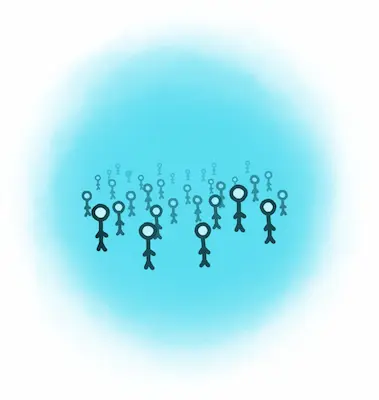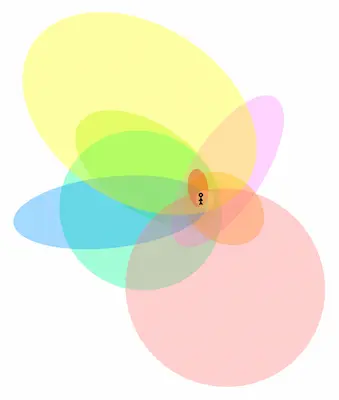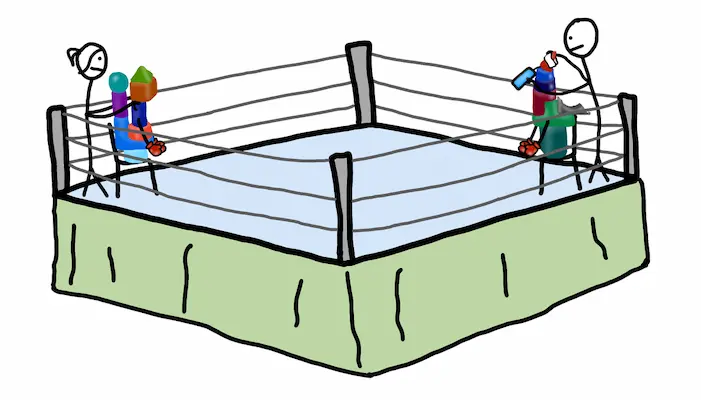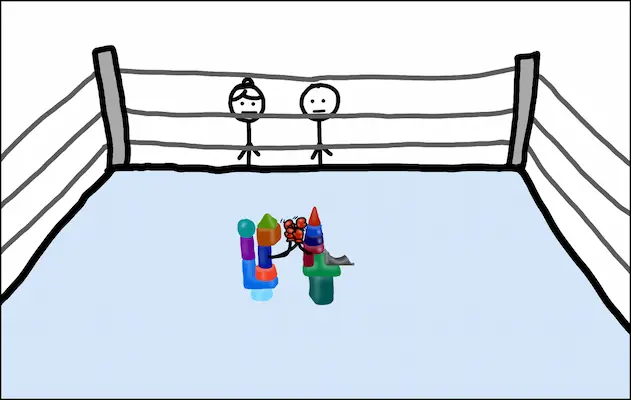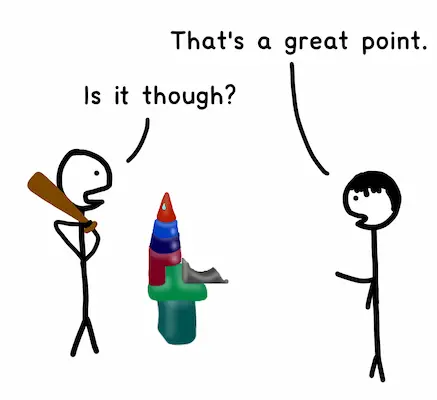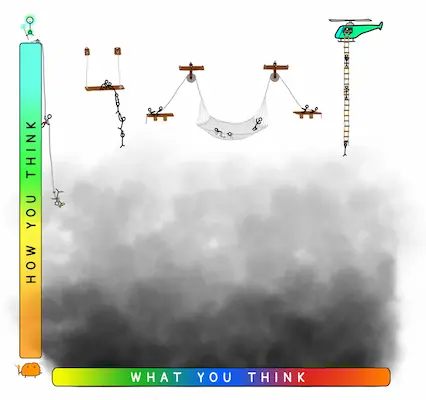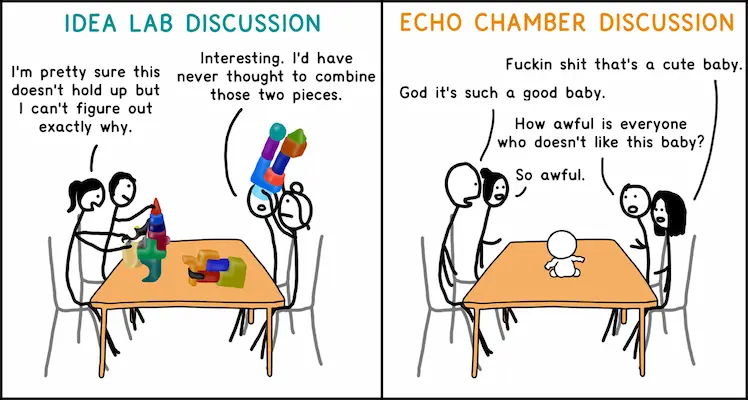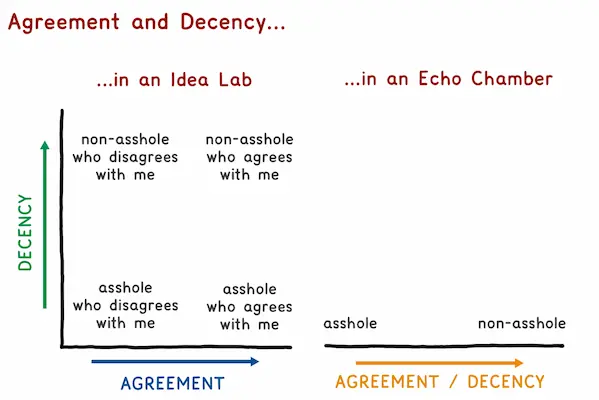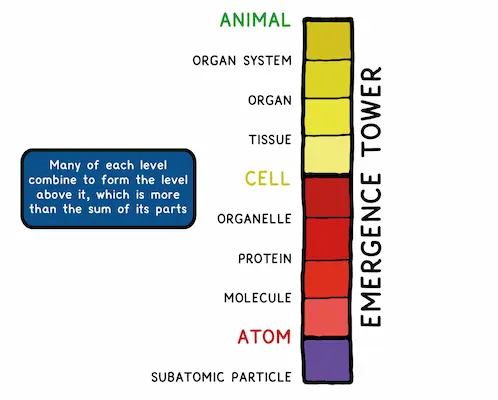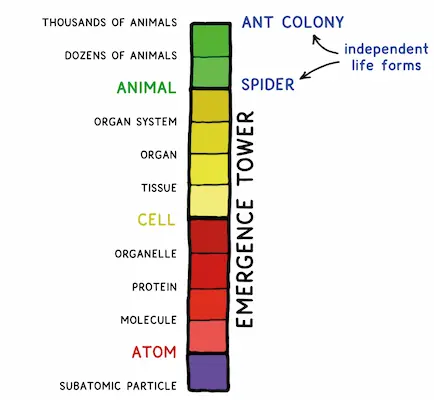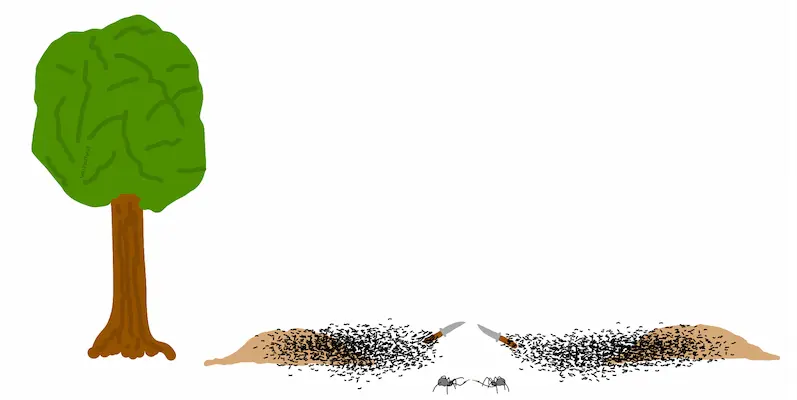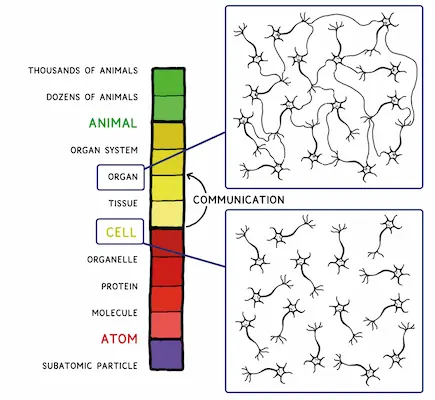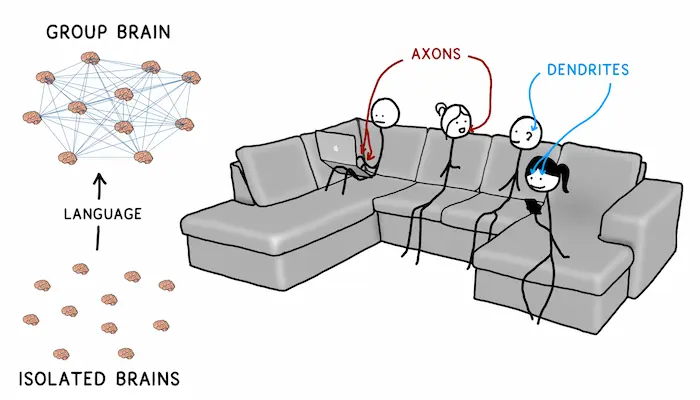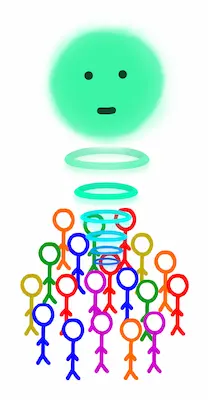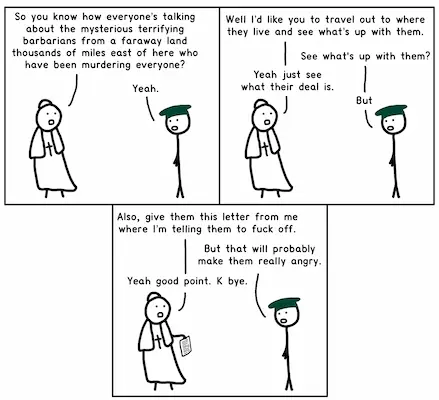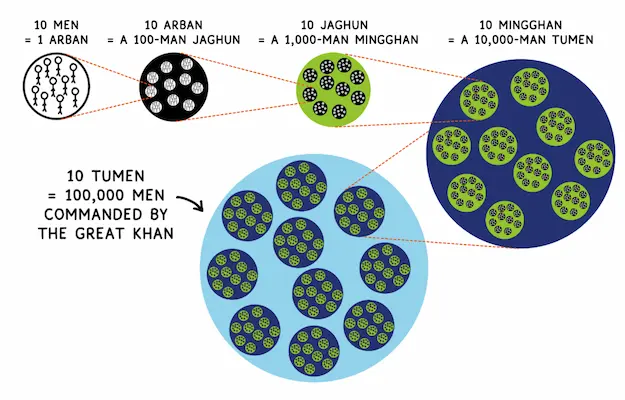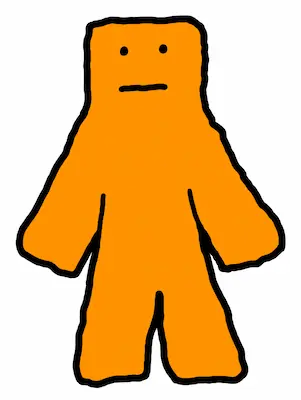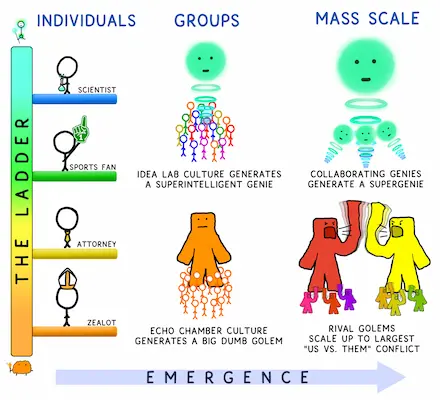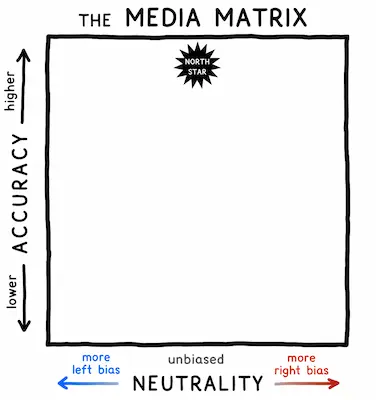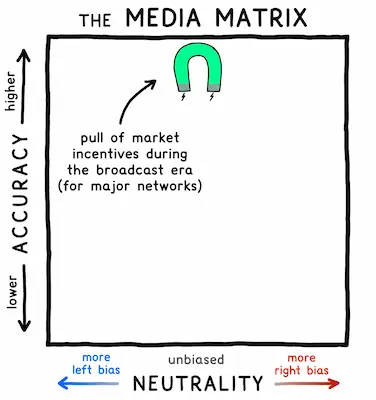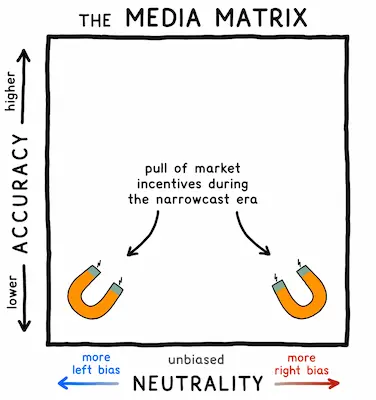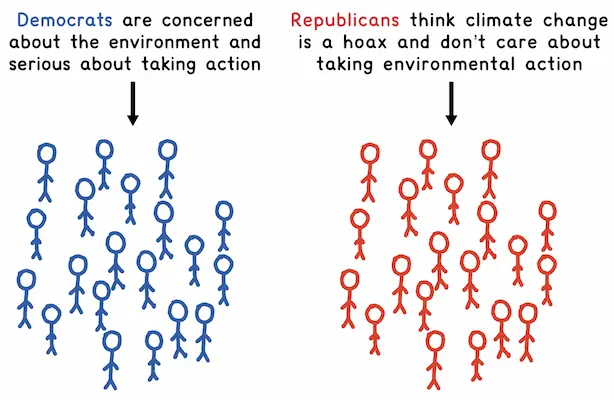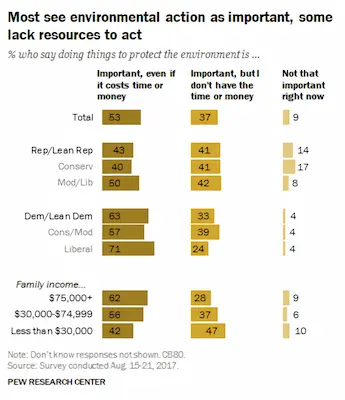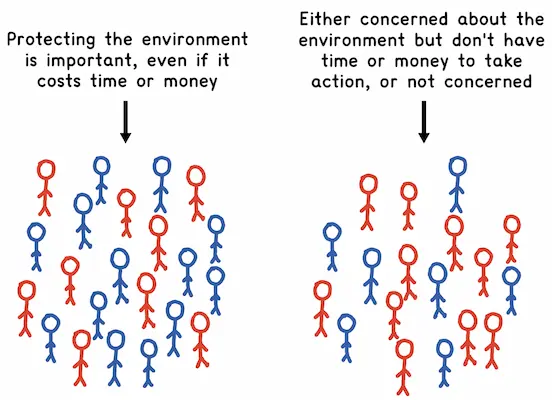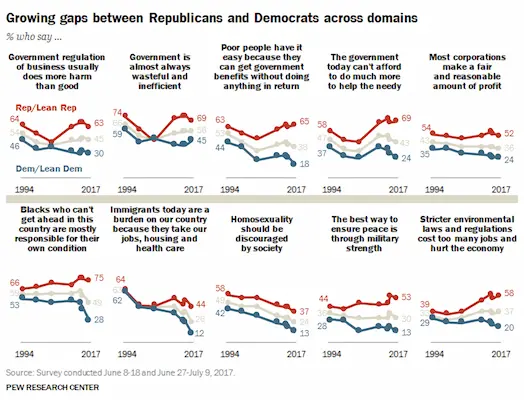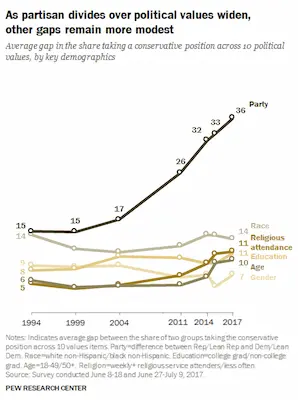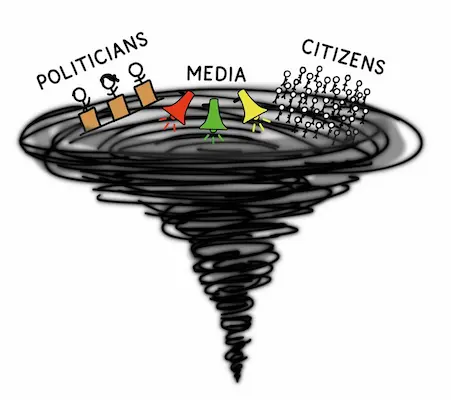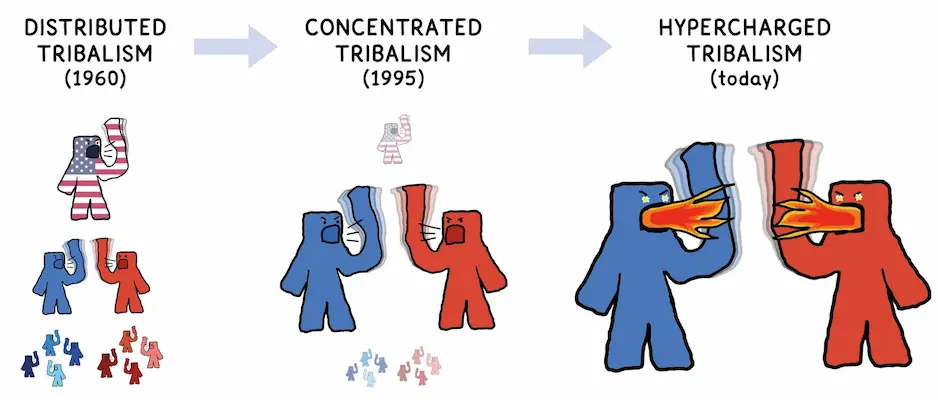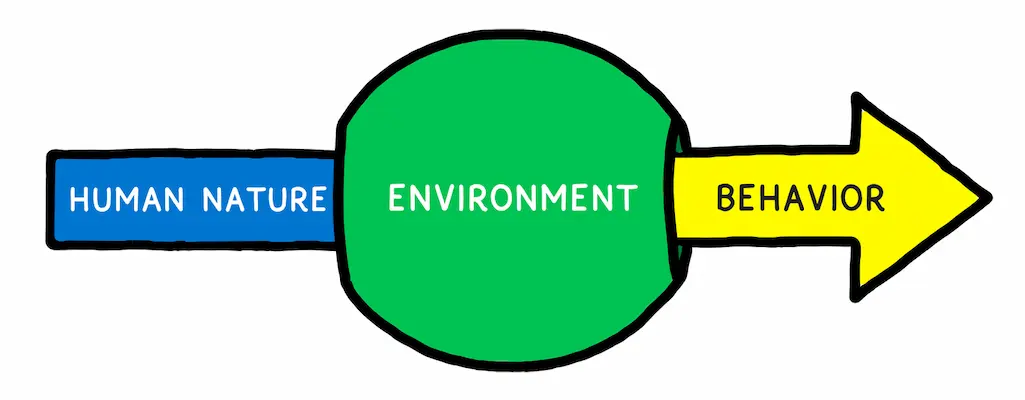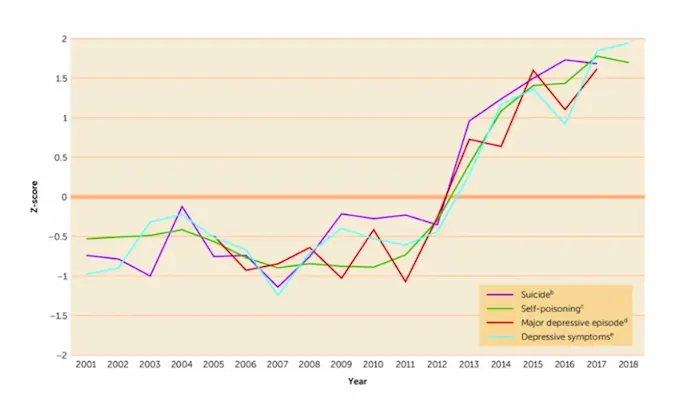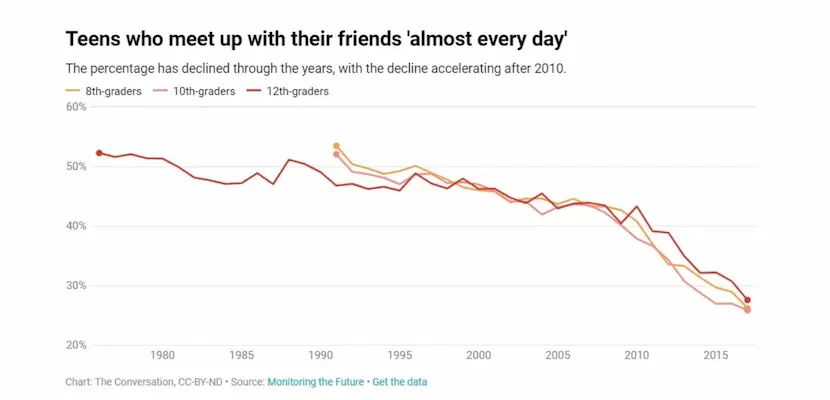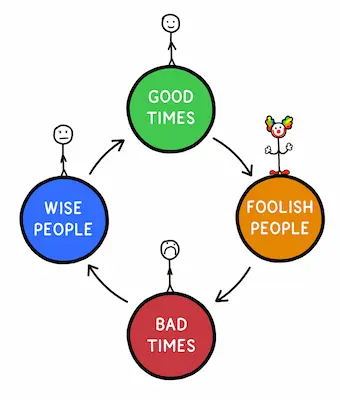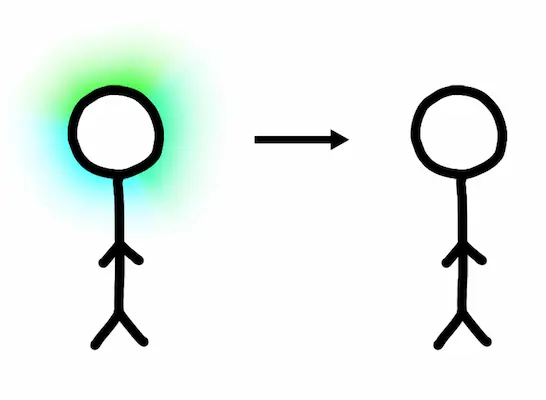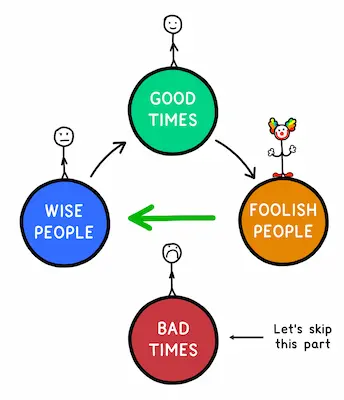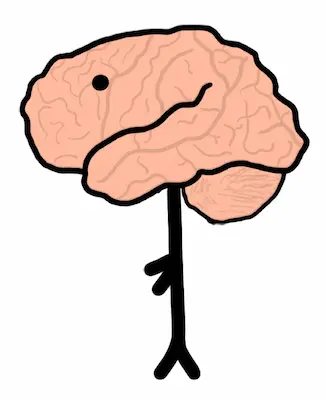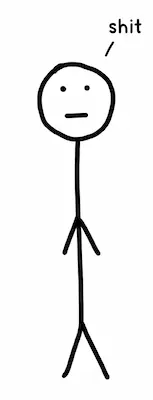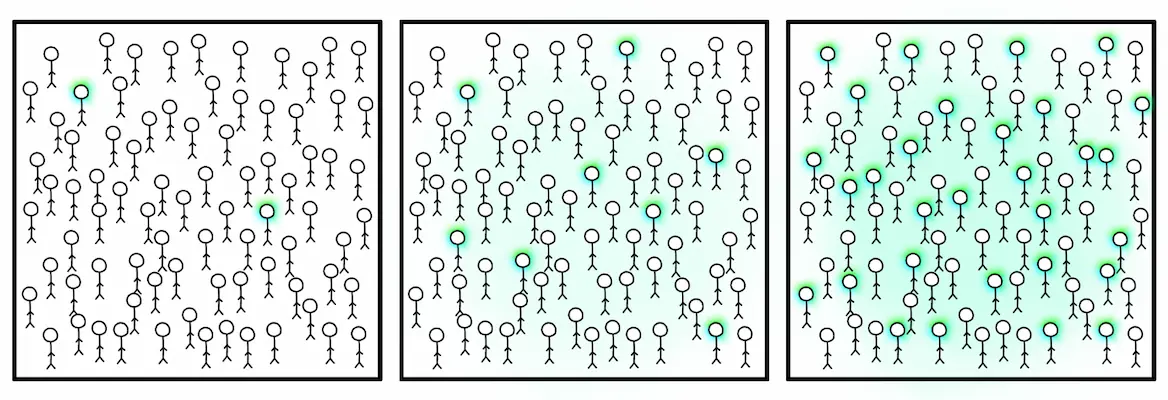Chapter 5: Narrowcast Media
The media shapes our lives in a bigger way than we can ever imagine. In our adult lives, the act of
consuming new information about the world is the constructive function of our actions, behaviors, and
beliefs.
If we look at all our consumption of media, our goal would be to have the most accurate, unbiased, and
personally empowering media possible. This is an ideal however, below is a chart displaying one spectrum of
a media plot, with a north star representing the goal.
Every media brand, media personality, or journalist can be plotted somewhere in the matrix.
At the top-middle of the Media Matrix is media’s North Star. Here you have media sources that are rigorous
about both accuracy and neutrality, trying their best to present the truth, the whole truth, and nothing but
the truth—along with acknowledging when they don’t know what the truth is. This is the realm of high-rung
journalism.
As you move to the left and right of the North Star, political bias begins to creep in. Media voices will
tell most of the story, but they may omit certain unhelpful-to-their-cause stories. When you get all the way
to the upper corners, you have brands with a serious bias—careful about accuracy but not about neutrality.
Everything they report is carefully cherry-picked.
As you move down in the Media Matrix, accuracy diminishes as a core value in favor of profit,
entertainment, a political agenda, or something else. A news source down here is a steadfast ally to its
partisan audience, and it stays current with the latest talking points in Political Disney World, even if
that means twisting stories, using misleading statistics, pulling quotes out of context, treating rumors as
facts, or any other form of bullshit.
From broadcasting to narrowcasting
In the 1980s, most Americans got their TV news from the Rather/Jennings/Brokaw trio on CBS, ABC, and NBC;
in earlier years, from nationwide titans like Walter Cronkite. In those days, networks competed to capture
the largest share of American viewers. They were careful to avoid seeming politically biased and they knew
that reporting a story incorrectly could lead to damaged credibility and a loss of viewers. They were
incentivized by market forces and
government regulation not to stray too far from the North Star.
In recent decades, new technology has dramatically changed this landscape.
First, there was the explosion of cable television around 1980, and
with it, the advent of 24-hour cable news (CNN launched in 1980).
Cable channels, with hazier expectations than mainstream networks
and 24 hours a day to work with, could be more experimental with the
way they covered the news.
Take ants and spiders. Ants are furiously loyal. They always put
the team first. The ants I’ve gotten to know in my life have a
long list of bad personal qualities, but “individual selfishness”
isn’t one of them.
Then there was the end of the Fairness Doctrine. In 1949, the FCC
(the U.S. Federal Communications Commission) established the
Fairness Doctrine, which required anyone who held a broadcast
license to present “controversial issues of public importance” in a “fair
and balanced” manner, giving airtime to “contrasting viewpoints.” In
1987, in the face of arguments that the Fairness Doctrine was in direct
conflict with the First Amendment’s freedom of the press clause, it was repealed.
The removal of the Fairness Doctrine was soon followed by a sharp
rise in overtly partisan media. Conservative talk radio exploded onto
the scene in the late 1980s, most notably with The Rush Limbaugh
Show, which debuted to a national audience in 1988 and made
Limbaugh the country’s most syndicated radio host by 1991. In
1996, Fox News and MSNBC were born. Rather than broadcasting to
all of America, these new media channels could narrowcast to a
specific subset of the country.
In college in 2004, I attended a live interview with Ted Koppel, the
anchor of ABC’s late-night news show Nightline. I remember the host
commenting that Koppel was famously secretive about his own
political leanings. This was the standard for prominent anchors in the
past, but by the end of the 1990s, a huge portion of Americans were
getting their news from people whose political leaning was supremely
out on the table.
While these changes were happening, the internet sprung into our
lives, and with it, sites like The Drudge Report (1995), Slate (1996),
The Huffington Post (2005), and Breitbart (2007), along with a trillion
political blogs and YouTube channels. The internet took narrowcasting
up into a new gear: full-fledged tribal media.
Meanwhile, Fox News and conservative radio continued to grow in
size and influence, generating an insular right-wing information
bubble that persists today. This was countered with a new genre of
TV news on the Left—political comedy shows. The Daily Show began in
1996 and became a multi-decade sensation by serving as—depending
on who you ask—either the voice of reason and sanity in the face of
growing right-wing madness, or a show where elitist progressives
would cackle as Jon Stewart relentlessly mocked their political out-
group. The Daily Show was followed by a slew of similar “look at how
awful the Right is” comedy/news shows, hosted by Daily Show alums
like Stephen Colbert, John Oliver, and Samantha Bee.
Narrowcast media caters to homogeneous audiences, which
decreases the incentive to worry about neutrality and heightens the
incentive to provide viewpoint confirmation. Rather than tell people
which candidate is likely to win the next election like the old days,
narrowcast media reaps huge rewards for telling people why their
favorite candidate ought to win. With little risk of reputation
damage for biased coverage, narrowcast media can continually bash
one side while giving the other side a free pass and end up with a more
loyal audience for it. If broadcast media functions like a top-rung
Scientist, narrowcast media functions like a third-rung Attorney.
Because when the environment changes, so does behavior.
Junk food
Many businesses have learned that a great way to make money is to
sell directly to the simple, predictable Primitive Mind. To sell food to
the Higher Mind, you have to worry about quality and nutrition, which
is expensive and hard. Instead, you can sell Skittles to the Primitive
Mind, who mistakes them for nutritious food.
If professional news coverage is nutritious food, political junk food
looks like this(all actual headlines):
The confirmation promised by these kinds of headlines looks as
delectable to the Primitive Mind as the sweet sustenance promised by
a Skittles wrapper. Political junk food isn’t geared toward learning. The
headlines tell you from the get-go which side will win and which side
will lose. It combines three of the Primitive Mind’s favorite things:
viewpoint/identity confirmation, out-group bashing, and gossip.
The explosion of the political junk food market has dragged many
American minds downward into Political Disney World, the land of
good guys, bad guys, and simple storylines—which in turn has
continually raised the demand for junk food.
The further this cycle goes, the harder it is to reverse. Media brands
that offer up one-sided tribal junk food end up alienating high-rung
minds, which makes the brands that much more dependent on the
junk-food-loving low-rung audience. And tens of millions of Americans
end up with political diabetes.
As the media junk food industry has grown and matured, it has
increasingly immersed its audience in a new, hideous genre of
entertainment:
Political reality TV
Broadcast TV news aimed to be a show about reality. Narrowcast
news tries to be a reality show. Big difference.
Reality is interesting sometimes. Reality shows are interesting all
the time. And what’s the reality TV producer’s best trick? Drama and
negativity. Would anyone watch The Real Housewives of Beverly
Hills if the characters got along most of the time? Of course not. That’s
why every five minutes of the show includes a conflict of some kind.
As soon as you realize that news media is also entertainment media, the constant coverage of conflict and
drama makes perfect sense. In the U.S., many of us are addicted to a trashy reality show I call The Real
Politicians of Washington D.C.
The cast changes from year to year, but the formula is the same:
there are whole teams of heroes and villains, lots of ongoing
storylines, and endless conflict. It’s a perfect vehicle for a dramatic,
super-addictive soap opera.
It’s not that these heavily featured politicians or the played-up
storylines are unimportant. It’s that we receive a
totally skewed depiction of the full set of relevant political issues. The
issues that make headlines day in and day out are usually
overrepresented, while lots of other important political stories—like
the bills being approved each week by the 50 House and Senate
committees—are woefully underreported.
I recently had a chance to talk with a U.S. representative
named Derek Kilmer. Kilmer is the former head of a major
congressional coalition of moderate Democrats with 99 members.
He’s full of nuanced, measured, well-thought-out ideas for how to
make the country better. Which is exactly why you’ve never heard of
him. The editors of The Real Politicians waste no airtime on politicians
like Kilmer because he’s measured and nuanced and I’m falling asleep
just writing this sentence.
Actual politics, like actual reality, is boring to most people. So tribal
media brands do what reality TV producers do—they manufacture a
carefully edited, fictional version of politics that’s wildly entertaining.
That’s why most Americans who will tell you they’re passionate
about politics can barely name ten current members of Congress. They
probably can’t name all the U.S. representatives from their state, let
alone members of their state legislatures. But they can tell you about
the 10 or 15 politicians chosen by the media to be the main characters
on The Real Politicians, along with the five or ten hot button issues the
show features in any given month.
Concentrated tribalism has led to increased division—but The Real
Politicians adds fuel to the fire by making the distinction between the
parties seem even more stark than it actually is.
Take the issue of climate change, where we’re regularly presented
with this storyline:
So I was surprised to see this data:
Which suggests that things are more like this:
Very different story. Of course, it’s also true that many Republican
politicians have been dismissive of climate change. And “doing things
to protect the environment” is not necessarily the same as taking
action to curb emissions. But the survey makes me feel very differently
about the strategies climate activists should be using to build the
necessary coalition to change our trajectory.
Presenting an inaccurate version of reality breeds misplaced anger
and division and hurts our ability to move toward important goals—all
in the name of editing the reality show to be more entertaining with
crisper, juicier storylines.
The most dramatic events on The Real Politicians are elections.
Elections are the show’s climactic season finales. And the show’s
editors make sure to over-dramatize the shit out of them.
This is the past century of U.S. presidential elections.
It’s a clear zig-zag pattern. And yet, I remember when Bush won
reelection in 2004, media commentators were talking about how
Democrats couldn’t win races anymore for a number of seemingly
rock-solid sociological reasons. Then the Democrats swept the
midterms in 2006 and won the presidency in 2008.
I remember in 2012, when Obama won reelection, hearing people
say that the country had fundamentally shifted, that there were more
first-generation Americans than there used to be, that the Tea Party
had rendered the Republican Party irrelevant, and all of this other
proof that times had changed and the Democrats wouldn’t ever lose a
presidential election again.
Then Republicans swept all three branches of government in 2016,
at which point I read all these articles about how the Left is more
culturally powerful, but the Right is simply more politically powerful. I
also heard a bunch of stuff about how gerrymandering ensured that
the Democrats would never win back the House again. In 2018, the
Democrats won the House and then swept the Congress, Senate, and
presidency in 2020.
I don’t know what truly motivates today’s media. Maybe they make
politically motivated propaganda. Maybe they make profit-motivated
entertainment, which happens to double as political propaganda.
Whatever the motivation, the consequence is the same: enhanced
political tribalism.
Around a decade after the transformation to narrowcasting began,
another technological development added even more fuel to the fire.
Internet Algorithms
I appreciate the Google search algorithm. It filters results that are
most relevant to where I live and what I’m typically interested in, and it
can guess remarkably well what I want to search for after I type just a
few letters, saving me the trouble of typing the whole search.
I appreciate the YouTube algorithm, which knows my favorite
channels and makes sure I never miss their latest videos.
I appreciate the Facebook algorithm, which spares me the
knowledge of what Jake from high school 20 years ago made for
dinner last night while making sure to let me know when Jake gets
engaged, so I can go look through his 87 most recent photos to see the
deal with his fiancé.
Internet algorithms can be great things.
But new technology often comes along with unanticipated
consequences.
When I’m watching a YouTube video and I glance at the thumbnails
on the sidebar, I’m more likely to click on a video featuring someone
explaining history or science than I am to click on a video featuring
someone reviewing movies. YouTube has picked up on that, which is
why I never see movie review videos on my YouTube sidebar, but I’m
constantly being introduced to new history or science explainer
videos.
But then one night last year, someone sent me a funny video a
driver took with their phone. The driver taking the video had pissed off
another driver, who opened his window and started screaming curses.
The angry driver got so worked up that he swung his arm at the video-
taking driver angrily, and in the process, punched his own side mirror
off. A delight of all delights.
Then the video ended, and YouTube offered me my choice of nine
more videos in the road rage genre. I clicked on one of them and
watched it. Then YouTube offered me nine more. I had a lot of work to
do, so I held down the Command key and clicked on all nine, opening
them in nine new tabs, and watched them all. Two hours later, utterly
disgusted with myself, I pulled the dramatic “punishing Chrome by
holding down Command-Q and closing all eight Chrome windows and
all 127 of their open tabs” move. A nightmare waste of time. But at
least it was over.
Except it wasn’t over. Somewhere out there, the YouTube algorithm
was baiting its Tim Urban fishhook with the best of the best road rage
videos, which have reliably appeared in my YouTube sidebar ever since
that regrettable night, damning me to an entire life wasted watching
hilarious road rage videos.
Internet algorithms are profit-maximizing mechanisms that want to
spoon-feed me whatever I’m most likely to click on. This is a win-win,
symbiotic relationship—until it’s not. When an algorithm is jibing with
your Higher Mind, it’s your friend. When it’s luring in your Primitive
Mind against your Higher Mind’s will, the relationship is parasitic.
So how does this apply to politics? Primitive Minds like to click on
political junk food. They’re drawn to articles and videos that don’t just
report the news but sensationalize it and make it entertaining. The
YouTube sidebar can quickly turn into a wall of The Real Politicians of
Washington D.C. content the same way YouTube inundated me with
road rage videos. This feeds political tribalism and distorts our picture
of reality.
Then there’s social media, a phenomenon so peculiar and so specific
to modern times that it would seem incomprehensible to everyone
who came before us. Social media doesn’t just amplify political junk
food, it plays a role in shaping it. When a new political news story
makes waves, thousands of hot takes quickly bubble up. It’s not
necessarily the most accurate takes that rise to the top but those that
are most likely to make people click the retweet or share button—
those that have the catchiest wording and hit the right emotional
buttons. Through an almost evolutionary process, complex topics
are dumbed down and packaged into irresistible nuggets for our
Primitive Minds.
Only a minority of people are hyperpartisan. But internet
algorithms make people who are already extreme even more
extreme. On social media, these voices disproportionately drive the
conversation, making people feel like things are even more nasty and
polarized than they actually are.
In the 2020 documentary The Social Dilemma, computer scientist
Jaron Lanier uses Wikipedia as an example to highlight the craziness
of this situation:
When you go to a [Wikipedia] page, you’re seeing the same
thing as other people. So it’s one of the few things online that
we at least hold in common. Now, just imagine for a second that
Wikipedia said, “We’re gonna give each person a different
customized definition, and we’re gonna be paid by people for
that.” So, Wikipedia would be spying on you. Wikipedia would
calculate, “What’s the thing I can do to get this person to
change a little bit on behalf of some commercial interest?”
Right? And then it would change the entry. Can you imagine
that? Well, you should be able to, ‘cause that’s exactly what’s
happening on Facebook. It’s exactly what’s happening in your
YouTube feed.
What happens on social media often determines what happens in
the actual media. In his book Why We’re Polarized, Ezra Klein talks
about the way journalists choose what to cover—the way they decide
what is newsworthy. “A shortcut to newsworthiness,” he says, “has
always been whether other news organizations are covering a story—
if they are, then it’s newsworthy by definition.”
In the past, audience members had limited ability to influence what
news was covered. But social media changes the equation. “In the
modern era,” Klein writes, “a shortcut to newsworthiness is social
media virality; if people are already talking about a story or a tweet,
that makes it newsworthy almost by definition.”
It’s a vicious cycle. As political junk food pulls audiences further into
Political Disney World,23 the low-rung narratives go more viral, more
often, on social media. These viral narratives are then converted into a
wave of new junk food media content, which reinforces and legitimizes
the ideas circulating on social media. The connectivity of the internet
melds media and its audiences into a single self-perpetuating system.
It's no surprise where all this leaves us.
Separate Realities
Pew data, collected since 1994, shows us that the gap between the
viewpoints of Democrats and Republicans has grown on a selection of
issues across the board:
Averaging out the growth of the gap in those ten graphs yields a
smooth upward trend—even as gaps in viewpoints between other
kinds of demographics have remained unchanged:
When we hear about growing political division, most of us assume it
means citizens are divided in their values—that people are unable to
agree about What Should Be. But take another look at the ten
questions from Pew. There’s an element of What Should Be embedded
in some of the questions—but mostly, they are questions about What
Is. Many are statements about the status quo that the two political
sides do not agree on.
We see the same story again and again. A 2020 poll called Dueling
Realities found that 81% of Republicans believe “the Democratic Party
has been taken over by socialists,” while 78% of Democrats believe
“the Republican Party has been taken over by racists.” In 2022, Pew
found that 72% of Americans believe that “on the issues that matter to
them, their side in politics has been losing more often than winning”
while only 24% felt that their side was winning more than losing—a
natural result of political media that increasingly focuses on grievance
and negativity.
A 2017 survey titled “The Parties in our Heads” had an even more
revealing finding: the more political news respondents consumed, the
more skewed their perception of members of the other party.
Separate realities are a natural consequence of market incentives
moving from the North Star region closer to the lower corners of the
Media Matrix, where there’s almost no overlap in coverage between
the two sides. It makes sense that those most hooked on political
media would be the most delusional, the same way consumers of
political news in dog-raccoon-ville left the pro-dog and pro-raccoon
crowds with totally different perceptions of reality.
A Rise in Bigotry
News media is infamous for what we could call “destructive cherry-
picking”—a selection bias that sees negative stories as the most
newsworthy, because they draw the most interest. It’s why, for
example, Americans surveyed by Gallup since 1990 consistently think
crime is increasing, even though in almost every one of those years, it
decreased from the year before.
Destructive cherry-picking spreads fear and pessimism, and over
the past 20 years, it’s been steadily on the rise. In political media, this
can have especially dangerous consequences.
Geographic sorting means many people barely spend time with
anyone on the other political side, so the only information they have
on what those people are like comes through distorted media and
social media filters. The right-wing narrative floods right-wing people
with anecdotes that make it seem like everyone on the left positively
despises them and everything they stand for, and vice versa. Outrage
about these messages then spreads like wildfire on social media.
Vocal Primitive Minds activate other Primitive Minds. Presenting
people with a steady stream of “they hate you” jolts awake their
Primitive Minds, in many cases filling them with reciprocal disdain,
clouding their humanity, and flipping on that ancient tribal switch that
makes people want to band together into golems. Portraying a society
where everyone hates each other becomes a self-fulfilling prophecy.
So it’s no surprise that between 1994 and 2022, the percentage of
people who rate the opposing party as "very unfavorable" has tripled.
It doesn’t take long before this awakens the scariest human
emotion of all: disgust.
Like happiness, sadness, anger, and fear, disgust is a basic emotion,
meaning that it’s hardwired into all humans. Basic emotions were
helpful for survival in the ancient human world. A Google Images
search for “disgust” shows a bunch of people, all making the same
hideous face—squinting their eyes, curling up their noses, and exhaling
(and if it gets really bad, exhaling turns to gagging and eventually
vomiting). Scientists believe this is evolution’s way of getting us to
close up our incoming passages and expel outward whatever we can, in
order to protect ourselves when we’re in the presence of toxins or
disease. We react this way to anything our primitive software believes
is potentially dangerous and disease-carrying—like rotten food, blood,
feces, or maggots.
The strange thing is that disgust can carry over to how we
view people. There’s a sizable amount of research that suggests that
when people are exposed to something that brings out their disgust
emotion, they become harsher moral judges. In one experiment, a
group of Canadians were shown disturbing-but-not-disgusting images
of car accidents while another was shown photos of coughing people
and other disease-related visuals. Then both groups were questioned
about which countries they felt Canada should try to attract
immigrants from. Both groups showed a preference for immigrants
from familiar countries over immigrants from less familiar countries,
but the group that had seen images of disease felt this preference
much more strongly. In another study, participants sitting at a dirty
desk were harsher in their judgments of a series of criminal acts than
participants sitting at a clean desk. In another, a wafting noxious odor
made participants feel less warmly toward gay men.
Scientists use the term “behavioral immune system” to describe the
theory that disgust in humans is linked to xenophobia and discomfort
with practices and rituals (especially sexual) that seem foreign or
different to us—an ancient impulse we developed long ago, when
contact with foreign people and practices often did put you at risk of
disease.
The reason I call disgust the scariest of all human emotions is that
it’s a trigger for dehumanization, and dehumanization is the doorway
to the worst things humans do. It’s not a coincidence that two of the
most horrifying events in recent human history—the Holocaust and
the Rwandan genocide—were made possible by disgust. Nazi
propaganda constantly compared Jews to disgust-inducing animals
like rats, swine, and insects. The Rwandan radio broadcasts that
incited the 1994 genocide referred to Tutsis as “cockroaches”
repeatedly. These are just two examples of a well-worn tradition.30
Disgust fills our mind with a special kind of primitive fog—one that
turns ordinary humans into psychopaths who can commit or condone
unthinkable harm without remorse. Scary shit.
Geographic sorting and political junk food make a lethal combo,
ripe for disgust. It’s hard to feel dehumanizing disgust for people you
know personally. Less hard when you rarely see your enemies in
person. Less hard still when destructive cherry-picking teaches you
only the worst about them. As affective polarization has risen, political
opponents have gone from seeming like wrong or stupid people to
seeming like disgusting people.
We like to think of bigotry as something that other people do. But
we’re all capable of rank bigotry when our environment pushes the
right buttons in our psyche.
Political bigotry is as real as any other bigotry. In a 2014 paper on
political polarization in the U.S., political scientist Shanto Iyengar and
researcher Sean J. Westwood find evidence that “hostile feelings for
the opposing party are ingrained or automatic in voters’ minds” and
that “partisans discriminate against opposing partisans, doing so to a
degree that exceeds discrimination based on race.”⬥
Bigotry is at its most dangerous when it goes unrecognized. The
best tools to combat bigotry are social norms that penalize its
expression—but today in the U.S., political bigotry is rarely treated as
taboo.
Downward We Spiral
Human environments are made up of a complex fabric of culture,
norms, values, laws, and prevailing beliefs. Changes to any element of
our environment can trigger changes in other parts of the
environment, which in turn can cause more changes.
We discussed the way that the advent of tribal media made people
more partisan and more hooked on political junk food, and how the
resulting rise in demand pushed media to be even more tribal and one-
sided.
A similar feedback loop has taken place between voters and
politicians. Increasingly partisan politicians draw constituents deeper
into Political Disney World, and a lower-rung electorate is more likely
to reward politicians who cater to the low-rung mindset and snub the
politicians who act like grown-ups. As political tribalism has ramped up,
the number of undecided votes has dwindled. It makes less sense than
it used to for candidates to try to persuade moderate voters and more
sense to run hyperpartisan, negative campaigns that fire up their base and
increase turnout.
And as the media’s political coverage has morphed into a reality
TV show, it has created an incentive system that rewards politicians who
use inflammatory rhetoric. As the famously bombastic Representative
Newt Gingrich has put it: “You have to give them confrontations. When you
give them confrontations, you get attention.” Politicians who act like
children are great TV, which incentivizes the media to give them more
airtime, which helps those politicians win elections, which encourages
more of the same behavior.
In the first part of this chapter, we talked about how the distributed
political tribalism of the 1960s coalesced into a single, concentrated
tribal divide—an environment that makes a populace more vulnerable
to the pull of the low rungs. When this was coupled with other changes
in geography, media, and social media, it sent the country spinning
down a vortex of negative feedback loops.
This vortex has led us to a scary place I call hypercharged tribalism.
Hypercharged tribalism happens when a concentrated tribal divide reaches such intensity that it resembles a
religious war, subsuming the entire society and the people within it. Hypercharged tribalism turns thinking,
feeling human beings into loyal colony ants, overriding their intellect, their humanity, even their love of
family and friends. It’s a form of group madness—a contagion that spreads like an epidemic, awakening the
ancient survival instincts in millions of minds all at once, as huge groups of people slip into golem mode
in lockstep.

